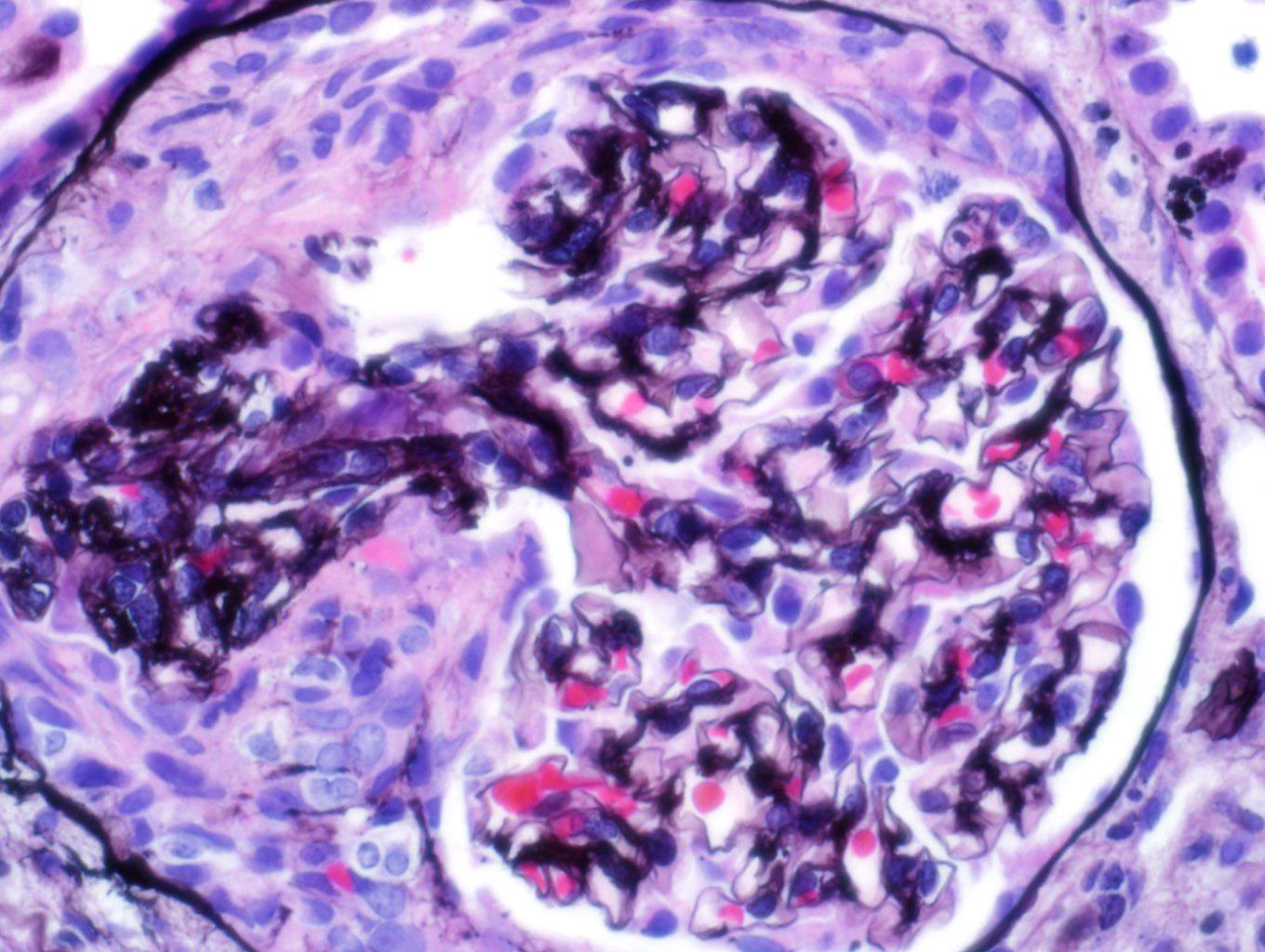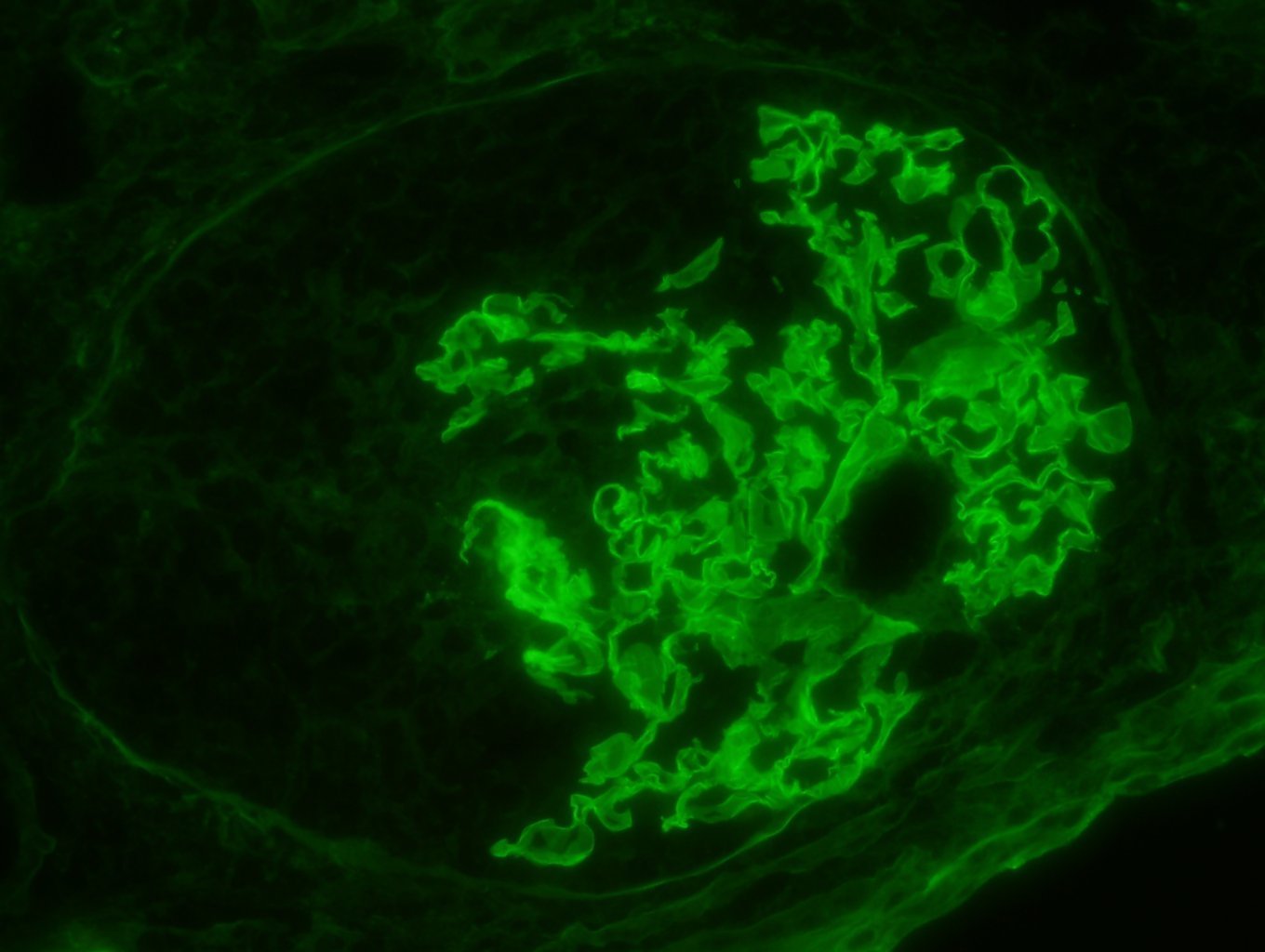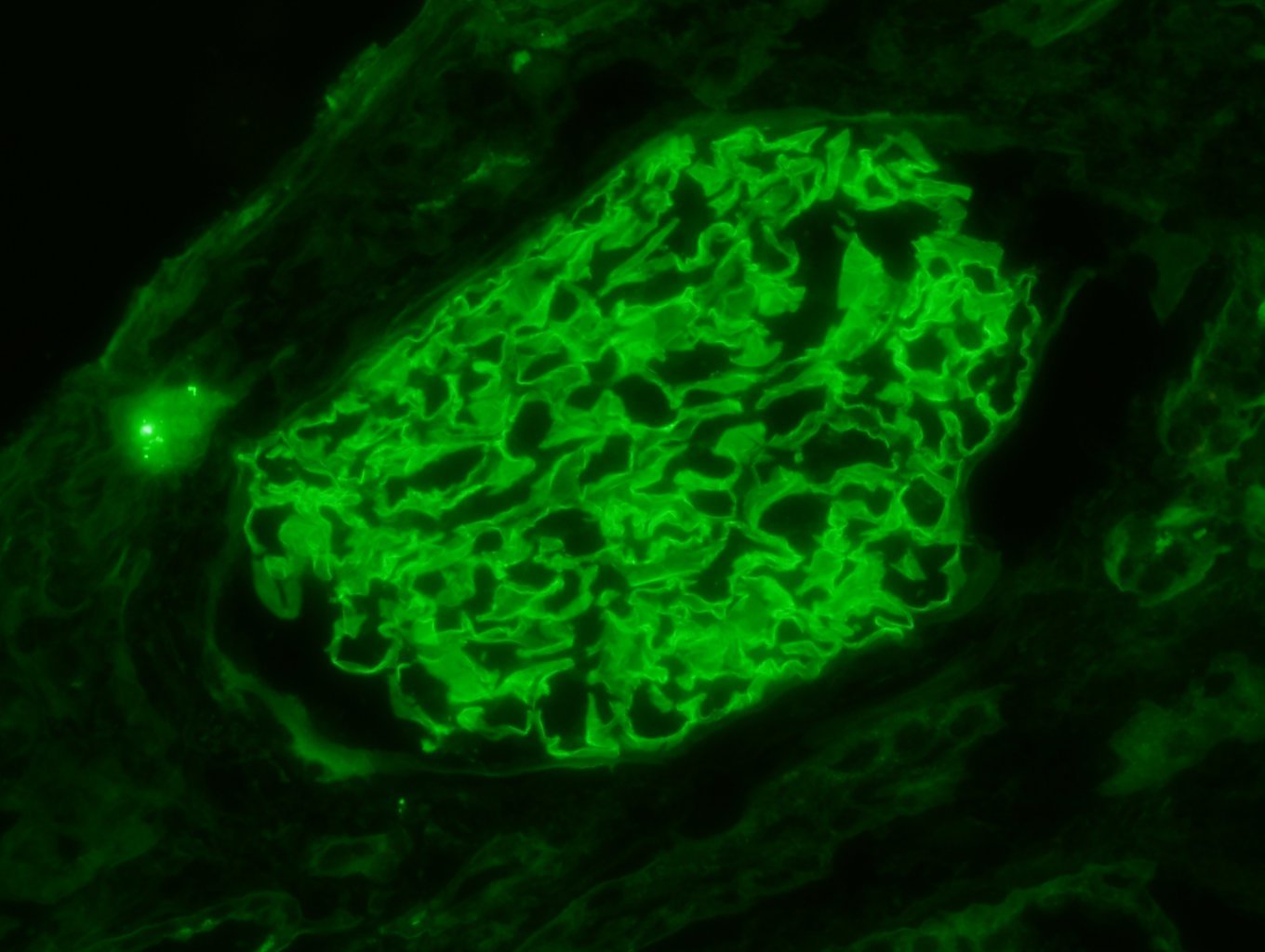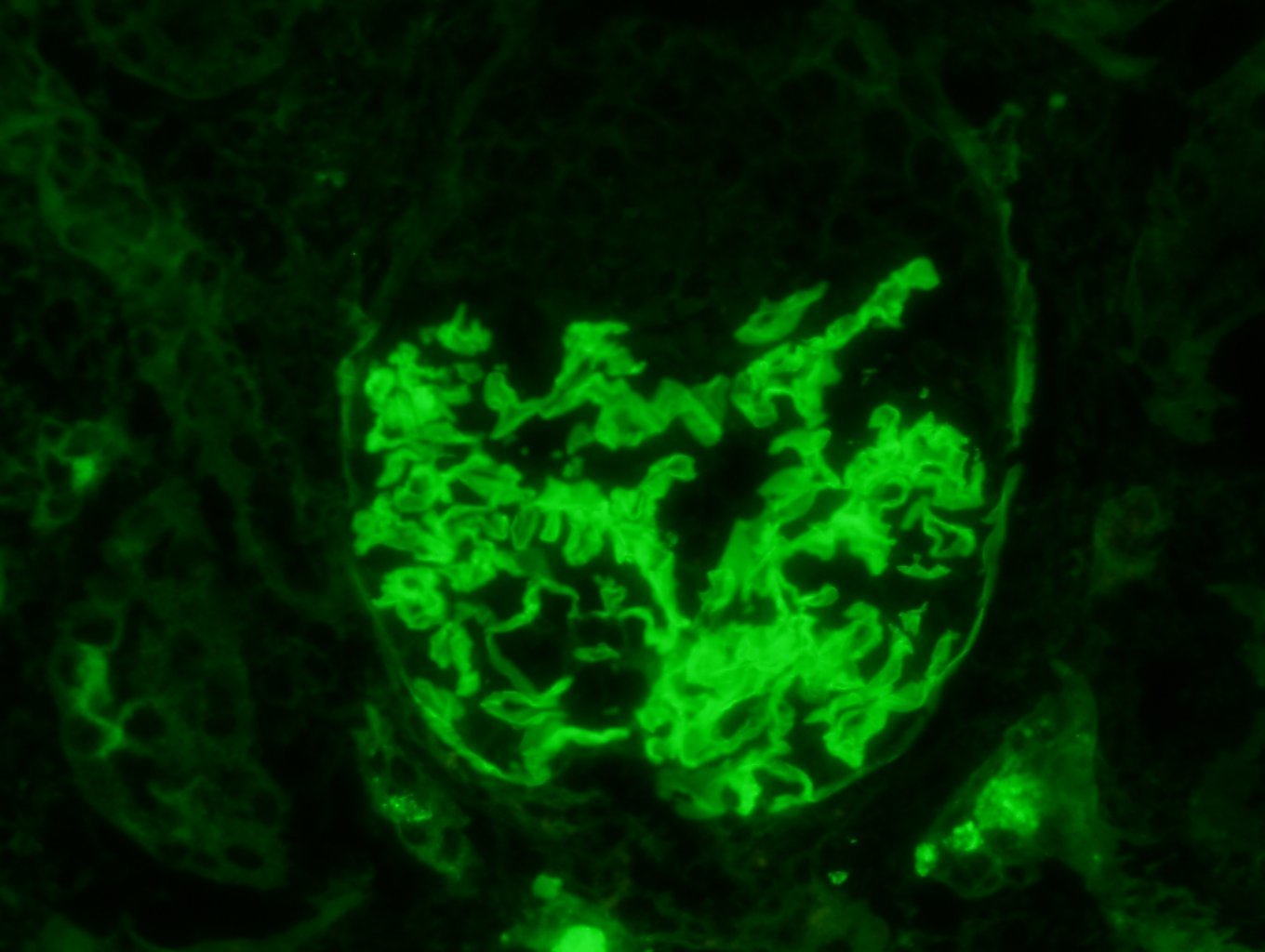The patient is a 61-year-old female who presents with hematuria and a creatinine of 6.23 mg/dL (baseline creatinine of 1.17 one month ago).
What is the most likely diagnosis?
A. Pauci-Immune Crescentic Glomerulonephritis
B. Anti-Glomerular Basement Membrane Disease
C. Crescentic Fibrillary Glomerulonephritis.
D. Lupus Nephritis
E. Early Diabetic Glomerulopathy
The answer is B!
The biopsy shows linear glomerular basement membrane staining for IgG, kappa, and lambda and this staining pattern is diagnostic of anti-glomerular basement membrane disease. Anti-glomerular basement membrane disease has a bimodal distribution in the general population. Younger patients (in their 20s) usually present with both hemoptysis and hematuria. Older patients (in their 60s) are usually women and present with renal limited disease. Pauci-immune crescentic glomerulonephritis is the most common cause of crescentic rapidly progressive glomerulonephritis, but the immunofluorescence staining, in this case, rules out this entity. Crescentic fibrillary glomerulonephritis can have linear staining for IgG, kappa, and lambda, but usually, has mesangial staining and 20 nm fibrils by electron microscopy. Lupus nephritis is a consideration, but no proliferation is seen in this single glomerulus and there is usually granular “full-house” staining by immunofluorescence. Diabetic glomerulopathy can have linear staining for IgG, kappa, and lambda, but the intensity of immunofluorescence staining and presence of crescents makes this less likely.
Quick note: This post is to be used for informational purposes only and does not constitute medical or health advice. Each person should consult their own doctor with respect to matters referenced. Arkana Laboratories assumes no liability for actions taken in reliance upon the information contained herein.




